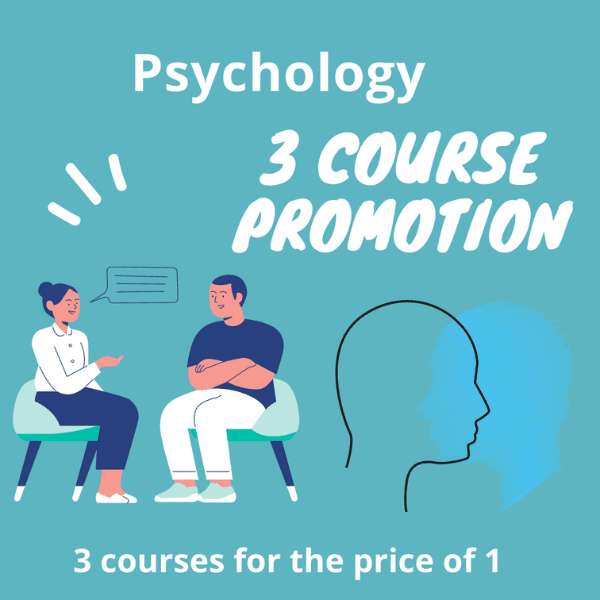How To Heal Obsessive Compulsive Disorder With CBT
Table of Contents
- Understanding OCD and how to heal OCD with CBT
- The Principles of Cognitive Behavioral Therapy for OCD
- Exploring Exposure and Response Prevention (ERP)
- The Role of Cognitive Techniques in Managing OCD
- Integrating CBT into Your Daily Routine
- Overcoming Challenges in CBT for OCD
- Measuring Success: Outcomes and Improvements
This article will explain in detail .How To Heal Obsessive Compulsive Disorder With CBT. Cognitive Behavioral Therapy (CBT) is a highly effective, evidence-based treatment for Obsessive-Compulsive Disorder (OCD). It focuses on identifying, challenging, and altering unhelpful thought patterns and behaviors associated with OCD. This therapy emphasizes the development of personal coping strategies and skills, aiming to reduce the severity of OCD symptoms. CBT for OCD involves techniques like exposure and response prevention (ERP), which helps individuals gradually face their fears without engaging in compulsive behaviors. This approach has been consistently shown to improve quality of life for those struggling with OCD, providing a structured framework for understanding and managing their condition.
-
Understanding OCD and how to heal OCD with CBT
Obsessive-Compulsive Disorder (OCD) is a complex mental health condition that significantly impacts daily life. It is characterized by intrusive, unwanted thoughts (obsessions) and repetitive, ritualistic behaviors (compulsions) that the sufferer feels compelled to perform. These symptoms can consume hours of a person’s day, leading to significant distress and interference with personal, social, and professional activities. Understanding OCD is crucial, as it extends beyond simple habits or worries; it’s a disorder that traps individuals in a cycle of anxiety and compulsion. The impact of OCD on daily life can be profound, affecting relationships, job performance, and overall quality of life. Individuals with OCD often experience shame and isolation due to their symptoms, which can hinder seeking help. Acknowledging the debilitating nature of OCD is the first step toward effective management and treatment, highlighting the importance of support, compassion, and evidence-based interventions.
OCD Overview: Symptoms and Diagnosis
Obsessive-Compulsive Disorder (OCD) is a chronic mental health condition marked by excessive thoughts (obsessions) and repetitive behaviors (compulsions). These obsessions can trigger intense distress, leading individuals to perform specific actions or rituals (compulsions) to alleviate their anxiety. Common obsessions include fears of contamination, needing things orderly, or aggressive impulses towards others. Compulsions might involve excessive cleaning, arranging items in a particular way, or repetitive checking. Diagnosis involves a thorough evaluation by a mental health professional, considering the extent to which these thoughts and behaviors affect one’s daily life. The criteria for OCD diagnosis include the presence of obsessions and/or compulsions that are time-consuming, cause significant distress, and impair social, occupational, or other important areas of functioning, distinguishing OCD from normal routines and worries.
Principles of Cognitive-Behavioral Therapy
Cognitive-Behavioral Therapy (CBT) is grounded in the principle that psychological problems are partly based on faulty or unhelpful ways of thinking and learned patterns of unhelpful behavior. CBT operates on the understanding that thoughts, feelings, and behaviors are interconnected, and that altering one can lead to changes in the others. This therapeutic approach involves efforts to change thinking patterns and behaviors that are behind individuals’ difficulties, and it teaches them new, more constructive ways of thinking and acting. It is a structured, goal-oriented, and short-term therapy, typically involving efforts to identify and challenge distorted cognitions, develop problem-solving skills, and learn to face one’s fears through techniques such as exposure therapy. CBT is evidence-based and has been extensively researched, showing effectiveness in treating a variety of mental health conditions, including anxiety disorders, depression, and OCD.
The Role of Exposure and Response Prevention (ERP)
Exposure and Response Prevention (ERP) is a cornerstone of Cognitive-Behavioral Therapy (CBT) for treating Obsessive-Compulsive Disorder (OCD). ERP is based on the principle of habituation, the process by which the emotional response to a feared object or situation decreases with repeated exposure. In ERP, individuals are gradually and systematically exposed to the thoughts, images, objects, and situations that trigger their obsessions, while being encouraged to refrain from engaging in the compulsive behaviors typically performed to reduce anxiety or distress. This method allows individuals to confront their fears in a controlled, therapeutic setting, leading to a decrease in the power these fears have over them. Over time, ERP helps reduce the intensity and frequency of OCD symptoms, empowering individuals to regain control over their lives without being dominated by obsessive-compulsive cycles.
CBT in Action: Strategies and Techniques
In Cognitive-Behavioral Therapy (CBT) for Obsessive-Compulsive Disorder (OCD), several strategies and techniques are employed to challenge and change the unhelpful patterns of thinking and behavior characteristic of OCD. Key techniques include cognitive restructuring, where individuals learn to identify and challenge irrational beliefs and cognitive distortions that fuel their obsessions and compulsions. Behavioral experiments are conducted to test the beliefs about specific fears and learn from the outcomes, often revealing less catastrophic results than expected. Mindfulness and relaxation techniques are integrated to help manage anxiety and reduce the urge to perform compulsive behaviors. Graduated exposure exercises, part of Exposure and Response Prevention (ERP), enable individuals to systematically face their fears without resorting to compulsions, gradually diminishing their anxiety and improving control over OCD symptoms. These methods collectively empower individuals with practical skills for long-term management of OCD
Measuring the Effectiveness of CBT for OCD
Measuring the effectiveness of Cognitive-Behavioral Therapy (CBT) for Obsessive-Compulsive Disorder (OCD) involves a multi-faceted approach, focusing on symptom reduction, improved functioning, and enhanced quality of life. Clinical assessments, standardized questionnaires, and self-report tools are commonly used to evaluate changes in the frequency and severity of OCD symptoms. The Yale-Brown Obsessive Compulsive Scale (Y-BOCS) is a widely recognized instrument for gauging the severity of obsessions and compulsions, both before and after treatment. Additionally, measures of daily functioning and well-being, such as the Sheehan Disability Scale, provide insights into the therapy’s impact on everyday life. Patient feedback also plays a critical role in assessing therapy effectiveness, including their sense of control over symptoms and improvements in social, occupational, and personal domains. Success is indicated not just by symptom reduction, but also by increased resilience and coping skills, contributing to overall life satisfaction.
Overcoming Challenges in CBT Treatment
Overcoming challenges in Cognitive-Behavioral Therapy (CBT) treatment for mental health conditions, including Obsessive-Compulsive Disorder (OCD), involves addressing both therapist and patient-related factors that may impede progress. A key challenge is the patient’s resistance to engaging in exposure exercises due to fear of anxiety escalation. Therapists can mitigate this by building a strong therapeutic alliance, ensuring a gradual and supportive exposure process, and reinforcing the patient’s autonomy and control over the pace of therapy. Another challenge is the rigidity of negative thought patterns, which requires persistent cognitive restructuring and the use of varied techniques to foster flexibility in thinking. Additionally, maintaining motivation and adherence to homework assignments is critical; therapists can enhance motivation through goal setting, celebrating small successes, and integrating motivational interviewing techniques. Adapting CBT to suit the individual’s specific needs, cultural background, and learning style, as well as addressing comorbid conditions, are crucial for overcoming challenges and optimizing treatment outcomes. Engaging family members in the therapy process when appropriate can also provide additional support and understanding, further facilitating progress in CBT
10 Tips for Recovery using CBT techniques
Here are ten strategies for a successful recovery:
- Set Realistic Goals: Break your larger goals into smaller, manageable tasks to avoid feeling overwhelmed and to track your progress more effectively.
- Practice Mindfulness: Engage in mindfulness exercises to stay present and reduce the impact of intrusive thoughts.
- Identify Triggers: Recognize the situations, thoughts, or feelings that trigger your OCD symptoms, so you can prepare strategies to address them.
- Challenge Negative Thoughts: Use cognitive restructuring to challenge and change unhelpful, distorted thoughts into more balanced and realistic ones.
- Gradual Exposure: Gradually expose yourself to feared objects or situations in a controlled manner to reduce anxiety over time without performing compulsions.
- Develop Coping Strategies: Create a list of healthy coping strategies that you can turn to instead of compulsive behaviors.
- Maintain a Routine: Establishing a consistent daily routine can help manage anxiety and provide a sense of normalcy and control.
- Celebrate Progress: Acknowledge and celebrate even small victories over your OCD to motivate continued effort and progress.
- Seek Support: Engage with a support group or connect with others who are also using CBT for OCD to share experiences and tips.
- Be Patient and Persistent: Recovery is a process that requires time and patience. Stay committed to your CBT techniques and be gentle with yourself during challenging times.
In conclusion, Cognitive-Behavioral Therapy (CBT) offers a robust framework for understanding and treating Obsessive-Compulsive Disorder (OCD). By employing strategies such as cognitive restructuring, exposure and response prevention, and mindfulness, individuals can gain control over their obsessions and compulsions, leading to improved quality of life. Success in CBT requires patience, persistence, and practice. With dedication and the right support, individuals can make significant progress toward recovery, embracing a life defined not by OCD, but by their strength and resilience in overcoming it.
FAQ:
- What is Cognitive-Behavioral Therapy (CBT) and how does it work for OCD?
CBT is a type of psychotherapy that addresses negative patterns of thought and behavior. For OCD, it typically involves Exposure and Response Prevention (ERP), which helps reduce compulsive behaviors and anxiety by gradually exposing individuals to their fears without performing rituals.
- How long does CBT for OCD take to show results?
The duration of CBT for OCD varies by individual, but many can see improvements in 12 to 20 sessions. Consistent practice of CBT techniques outside of sessions accelerates progress.
- Can CBT cure OCD permanently?
While CBT is highly effective in managing OCD symptoms, it’s considered a treatment rather than a cure. Many individuals experience significant long-term improvement, but ongoing application of learned strategies is essential for maintaining gains.







